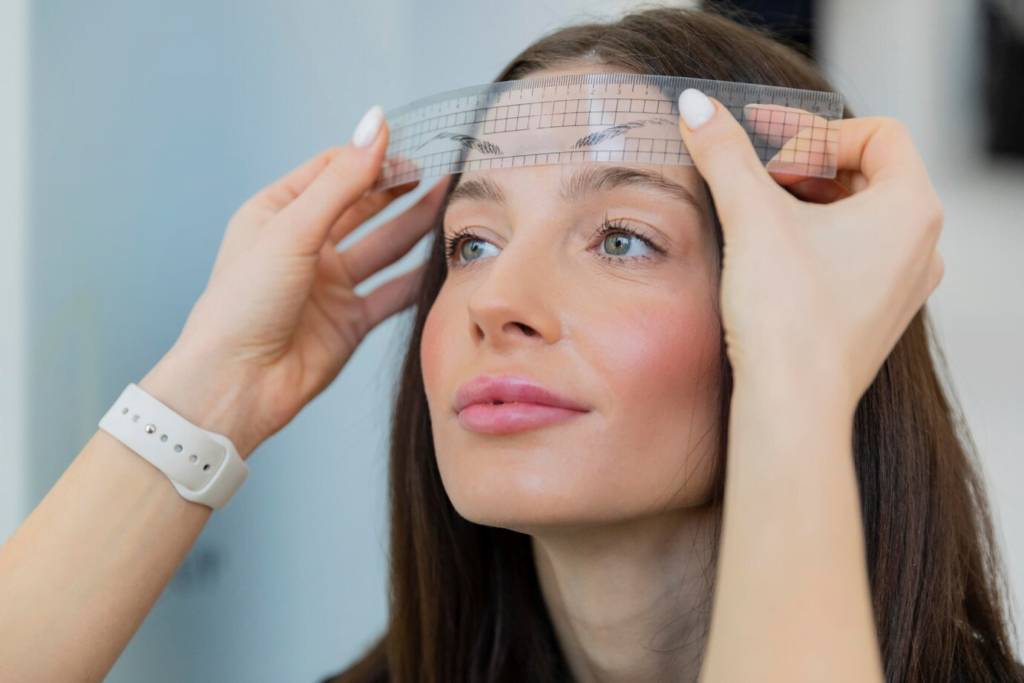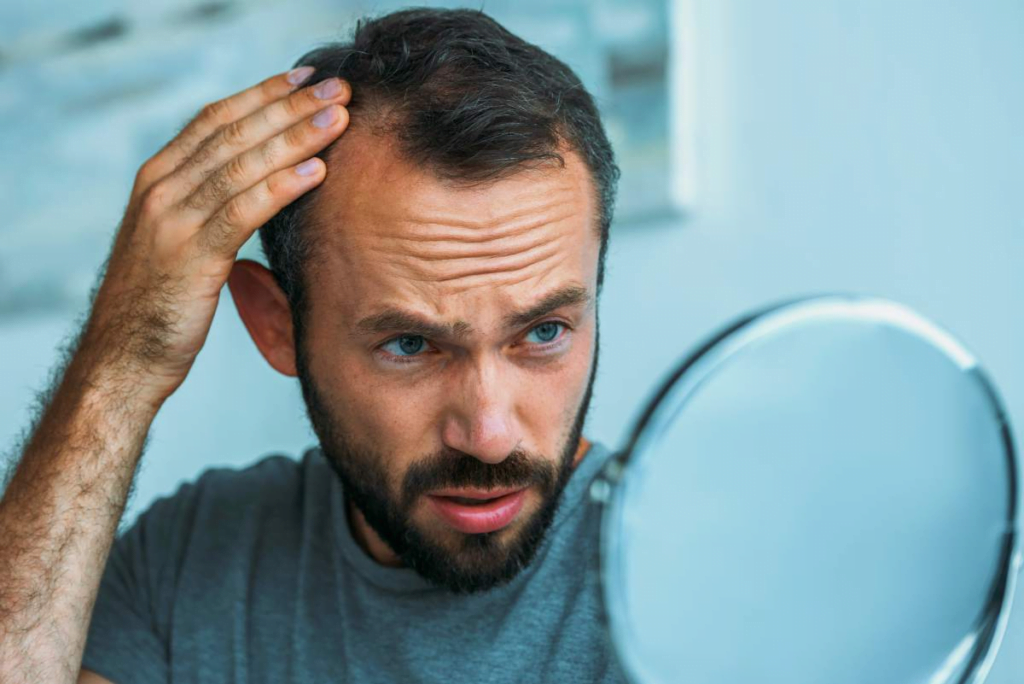Have you been dreaming of a smoother forehead and a fuller hairline as part of your facial feminization surgery (FFS)? You might be wondering: can you combine forehead reconstruction with a hair transplant in one fell swoop? The answer, like many things in life, is “it depends.” This blog post dives deep into the world of forehead reconstruction with a hair transplant during FFS, exploring the potential benefits, logistical considerations, and factors to discuss with your surgeon.

İçindekiler
Unlocking Harmony: Forehead Reconstruction with Hair Transplant During FFS
Facial Feminization Surgery (FFS) offers a powerful avenue for achieving a more feminine facial appearance. A critical aspect of this transformation is often the hairline. However, some individuals might desire a more comprehensive approach, seeking to address both hairline position and overall forehead shape. This is where the possibility of combining forehead reconstruction with a hair transplant during FFS emerges.
Is simultaneous forehead reconstruction and hair transplant possible during FFS?
Absolutely! In FFS, skilled surgeons can combine forehead reconstruction techniques like frontal scalp advancement with hair restoration surgery like follicular unit transplantation (FUT) or follicular unit extraction (FUE). This combined approach tackles two key areas:
- Hairline Lowering: Forehead reconstruction procedures like scalp advancement can directly lower the hairline position.
- Scalp Reconstruction: Hair transplant surgery fills in areas of hair loss or creates a denser, more natural-looking hairline after forehead reduction.
This synergy can lead to a more balanced and aesthetically pleasing outcome.

Are there any benefits to combining forehead reduction and hair transplant in FFS?
Yes, combining these procedures offers several advantages:
- Enhanced Femininity: A lower hairline and smoother forehead contour are characteristically feminine features. This combination can significantly enhance facial harmony and achieve a more feminine appearance.
- Reduced Scarring: Combining procedures can sometimes minimize overall scarring. For instance, the scalp advancement incision can be strategically placed within the new hairline, potentially reducing its visibility.
- Single Surgical Event: Undergoing both procedures simultaneously minimizes recovery time and avoids the need for separate surgeries.
Will my surgeon recommend combining forehead contouring with hair transplant for FFS?
The decision to combine these procedures depends on your individual goals and anatomical suitability. During your consultation, your FFS surgeon will thoroughly assess:
- Your desired hairline position: The extent of scalp advancement needed to achieve your desired hairline will influence the necessity of a hair transplant.
- Hair loss pattern: Existing hair loss or a receding hairline can benefit from hair transplant surgery to create a denser, more natural-looking hairline after forehead reduction.
- Scalp laxity: The elasticity of your scalp plays a crucial role. Adequate scalp laxity is necessary for successful scalp advancement during forehead reconstruction.
Following this evaluation, your surgeon will discuss the most suitable approach to achieve your desired outcomes.
What are the risks of having forehead reconstruction and hair transplant together during FFS?
As with any surgery, there are potential risks associated with combining forehead reconstruction and hair transplant during FFS. These include:
- Bleeding and infection: These are general surgical risks that can be minimized with proper technique and post-operative care.
- Scarring: While the goal is minimal scarring, some degree of scarring is inevitable. However, strategic incision placement can help minimize its visibility.
- Hair transplant complications: These can include graft failure, unnatural hair growth patterns, or temporary numbness in the recipient area.
It’s crucial to choose a highly skilled and experienced FFS surgeon who can minimize these risks and ensure optimal outcomes.
Does combining forehead reshaping and hair transplant in FFS affect recovery time?
While combining procedures can extend surgery time slightly, it can actually improve overall recovery by eliminating the need for a separate hair transplant surgery later. The recovery timeline will vary depending on the extent of each procedure, but typically involves swelling, bruising, and discomfort for the first few weeks.
Can I achieve a more feminine hairline with forehead reduction and hair transplant in FFS?
Absolutely! Forehead reconstruction with hair transplant surgery can significantly alter your hairline position and density. This combination allows for the creation of a lower, more rounded hairline, a hallmark feminine feature.
Is the cost higher for combining forehead surgery and hair transplant during FFS?
Yes, combining these procedures will generally cost more than undergoing them separately. However, it can be more cost-effective in the long run compared to having separate surgeries. Additionally, some clinics may offer bundled pricing for combined procedures.
Are there any alternative procedures to combining forehead reconstruction and hair transplant in FFS?
For individuals with minimal forehead prominence and minimal hair loss, alternative hairline lowering techniques like scalp micropigmentation might be an option. This non-surgical procedure involves tattooing tiny dots that mimic hair follicles, creating the illusion of a denser hairline. However, it’s important to note that scalp micropigmentation doesn’t involve actual hair growth.

What qualifications should an FFS surgeon have to perform combined forehead reconstruction and hair transplant?
Choosing a board-certified plastic surgeon with extensive experience in FFS is crucial. Ideally, your surgeon should:
- Possess a deep understanding of facial anatomy and the nuances of FFS procedures.
- Have a proven track record of successful outcomes in combining forehead reconstruction and hair transplant surgery.
- Utilize advanced surgical techniques like minimally invasive approaches to minimize scarring.
- Be meticulous about aesthetic considerations to ensure a natural-looking and harmonious facial balance.
- Offer a comprehensive consultation process, allowing you to discuss your goals and expectations in detail.
Can I see before-and-after photos of FFS with combined forehead reconstruction and hair transplant?
Many FFS surgeons include before-and-after photos of patients who underwent combined forehead reconstruction and hair transplant surgery on their websites or during consultations. However, it’s important to remember that individual results may vary. These photos can provide a general idea of the potential outcomes but should not be considered a guarantee of your specific experience.
By carefully considering the information presented here and discussing your unique goals with a qualified FFS surgeon, you can determine if combining forehead reconstruction with a hair transplant is the right approach to achieve your desired facial harmony and a more feminine appearance during your FFS journey.
Combining forehead reconstruction with a hair transplant during FFS can be a powerful technique for achieving a more balanced and aesthetically pleasing feminine facial appearance. This approach addresses both hairline position and overall forehead shape, potentially leading to significant enhancements.
However, the decision to undergo this combination surgery requires careful consideration of your individual goals, anatomical suitability, and potential risks. Consulting with a highly skilled and experienced FFS surgeon is paramount to ensure a successful outcome.
Ready to explore the possibilities of forehead reconstruction with a hair transplant in your FFS journey? Schedule a consultation with a qualified FFS surgeon to discuss your unique case and determine if this approach aligns with your desired results. Remember, achieving facial harmony and a more feminine appearance is a personal journey, and a skilled FFS surgeon can guide you towards your aesthetic goals.
Hairtrans.com was founded by world-famous plastic surgeon Dr. MFO, who is an expert in facial feminization or facial masculinization surgeries, and is managed under his leadership. Would you like to have a hair transplant under the coordination of a plastic surgeon with many years of experience?
Whether you are a trans woman or a natural born male or female, if you are looking for the best hair transplant, contact us now.
FAQ
Is forehead reconstruction with a hair transplant always necessary for FFS?
No, not necessarily. If your desired outcome focuses solely on hairline lowering and you have minimal forehead prominence, alternative hairline lowering techniques like scalp micropigmentation might be a suitable option. However, for individuals seeking a more comprehensive approach that addresses both hairline position and forehead shape, combining forehead reconstruction with a hair transplant can be highly beneficial.
What are the different types of hair transplant techniques used with forehead reconstruction during FFS?
The two most common hair transplant techniques used in conjunction with forehead reconstruction during FFS are Follicular Unit Transplantation (FUT) and Follicular Unit Extraction (FUE). Both techniques involve harvesting healthy hair follicles from a donor area (typically the back of the scalp) and transplanting them to the recipient area (the newly created hairline) following forehead reduction.
Does forehead reconstruction with a hair transplant leave noticeable scars?
While achieving minimal scarring is always a priority, some degree of scarring is inevitable with any surgery. However, skilled FFS surgeons utilize advanced techniques and strategically place incisions to minimize scar visibility. Additionally, the hair transplant itself can potentially help camouflage some scarring within the new hairline.
Can I see real patient results of forehead reconstruction with a hair transplant for FFS?
Absolutely! Many reputable FFS surgeons include before-and-after photos of patients who underwent combined forehead reconstruction and hair transplant surgery on their websites or during consultations. Remember, individual results may vary, but these photos can provide valuable insight into the potential outcomes.
What is the recovery time like after combining forehead reconstruction with a hair transplant during FFS?
The recovery timeline can vary depending on the extent of each procedure. Generally, patients experience swelling, bruising, and discomfort for the first few weeks. Combining procedures might extend surgery time slightly, but it can improve overall recovery by eliminating the need for a separate hair transplant surgery later.
How much does forehead reconstruction with a hair transplant cost during FFS?
The cost of combining these procedures will generally be higher than undergoing them separately. However, it can be more cost-effective in the long run compared to having separate surgeries. Additionally, some clinics may offer bundled pricing for combined procedures.
Am I a good candidate for combining forehead reconstruction with a hair transplant during FFS?
The suitability for combining these procedures depends on your individual goals and anatomical characteristics. During your FFS consultation, your surgeon will assess factors like your desired hairline position, hair loss pattern, and scalp laxity to determine the most appropriate approach for achieving your desired outcome.
Can forehead reconstruction with a hair transplant help me achieve a more rounded hairline?
Yes! Forehead reconstruction with hair transplant surgery can significantly alter your hairline position and density. This combination allows for the creation of a lower, more rounded hairline, a hallmark feminine feature. The hair transplant fills in the newly created hairline for a natural and aesthetically pleasing appearance.
What are the potential risks associated with combining forehead reconstruction with a hair transplant during FFS?
As with any surgery, there are potential risks associated with this combination, such as bleeding, infection, scarring, and hair transplant complications like graft failure or unnatural hair growth patterns. Choosing a highly qualified and experienced FFS surgeon who prioritizes patient safety and meticulous technique can significantly minimize these risks.
What qualifications should an FFS surgeon possess to perform forehead reconstruction with a hair transplant?
Your FFS surgeon should be a board-certified plastic surgeon with extensive experience in facial feminization procedures. Ideally, they should have a proven track record of successful outcomes in combining forehead reconstruction and hair transplant surgery, utilize advanced surgical techniques to minimize scarring, and possess a keen eye for aesthetics to ensure a natural-looking and harmonious facial balance.


